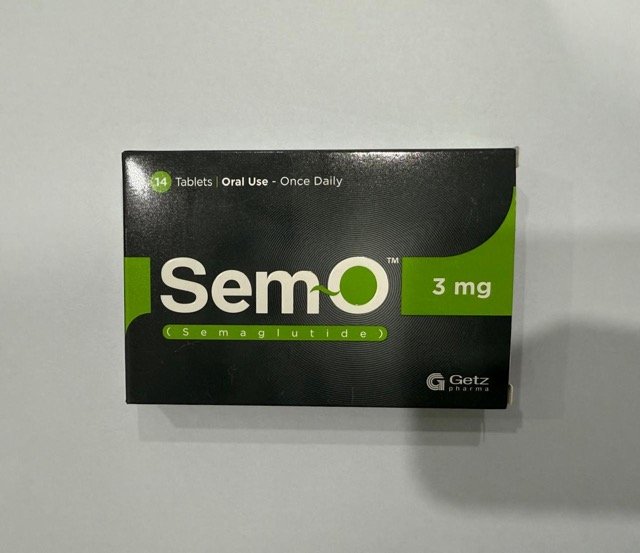Methimazole (Tapazole) is a Thioamide antithyroid drug that inhibits the production of thyroid hormone. Carbimazole (Neomercazole) is converted into methimazole after it is absorbed.
Methimazole Uses:
-
Hyperthyroidism:
- It is used in the treatment of hyperthyroidism in patients with Graves’ disease or a toxic multinodular goiter (surgery or radioactive iodine therapy is not appropriate)
- In preparation for thyroidectomy or radioactive iodine therapy, it can be used to ameliorate the hyperthyroid symptoms.
-
Off Label Use of Methimazole in Adults:
- Iodine-induced thyrotoxicosis
- Thyroid storm
- Thyrotoxicosis (type 1 amiodarone-induced)
Note:
Carbimazole (Neomercazole) is used in most countries. Details and doses mentioned here are about methimazole.
-
Methimazole and Carbimazole are not equivalent on a mg: mg basis.
-
0.6 mg of Methimazole is equivalent to 1.0 mg of Carbimazole
Methimazole Dose in Adults:
Note:
- An additional therapy (eg, beta-blockers) may be necessary to control symptoms,until thyriod levels normalize after initiation of theray.
- Carbimazole (Neomercazole) is not available in the US. However, in most countries including Pakistan, Carbimazole is commonly used (Methimazole is not available).
-
Methimazole and Carbimazole are not equivalent on a mg: mg basis.
-
0.6 mg of Methimazole is equivalent to 1.0 mg of Carbimazole
Methimazole Dose in the treatment of Hyperthyroidism:
Note:
- In patients with overt hyperthyroidism due to toxic multinodular goiter (TMNG) or toxic adenoma (TA), methimazole may be used temporarily to manage hyperthyroid symptoms prior to more definitive therapy, such as radioactive iodine (RAI) therapy or thyroidectomy.
- In patients who are not candidates for definitive therapy, chronic low-dose methimazole may be appropriate.
- ORAL:
- Initial dose: 15 to 60 mg/day depending on the severity of the disease.
- Usual maintenance dose: 5 to 15 mg/day.
- Total daily dose: May be given as a single dose or in 2 divided doses (for doses >30 mg/day).
-
Dosage adjustment:
- Adjust dosage as required to maintain serum FT3, FT4, and TSH levels in the normal range.
- An elevated T4 may be the sole indicator of inadequate treatment.
- An elevated TSH indicates excessive antithyroid treatment.
-
Patients with Toxic multinodular goiter or Toxic adenoma undergoing RAI therapy:
- If methimazole is used prior to Radioactive iodine (RAI) therapy, use caution when TSH levels are normal or elevated to avoid RAI therapy, as it increased the risk of hypothyroidism due to the destruction of normal thyroid tissue.
- If needed, may restart methimazole 3 to 7 days after RAI.
-
Patients with toxic multinodular goiter or toxic adenoma undergoing thyroidectomy:
- Methimazole may be used to achieve euthyroid status prior to surgery.
- Discontinue methimazole on the day of surgery.
Methimazole Dose in the treatment of Hyperthyroidism associated with Graves disease:
Note:
- Dose based on serum free T3 and T4 levels and clinical status to restore the euthyroid state and minimize adverse effects.
- Adjunctive therapy with potassium iodide may be beneficial in controlling hyperthyroidism and allow lower initial dosages of methimazole to be used.
- ORAL:
- Initial dose: 10 to 30 mg once a day, based on free T3 levels, lower doses (eg, 5 mg/day) or higher doses (eg, 40 mg/day) may be considered.
- However initial doses >30 mg/day are associated with increased adverse effects.
- In patients with severe disease, administering the daily dose in 2 divided doses (eg, 15 to 20 mg twice daily) may increase its efficacy.
- Methimazole duration of action may be less than 24 hours.
-
The following recommendations may be considered to guide initial dosing based on free T4 levels:
- 1 to 1.5 times ULN:
- 5 to 10 mg/day
- >1.5 to 2 times ULN:
- 10 to 20 mg/day
- >2 times ULN:
- 30 to 40 mg/day
- 1 to 1.5 times ULN:
- Usual maintenance (chronic therapy):
- 5 to 10 mg once daily for a total of 12 to 18 months.
- Discontinue if thyroid function tests (eg, TSH, thyrotropin receptor antibody [TRAb]) are normal at that time.
- Patients undergoing RAI therapy:
- Discontinue methimazole 2 to 3 days prior to planned RAI.
- If needed, may restart 3 to 7 days after RAI, followed by tapering dose when thyroid function normalizes.
- Patients undergoing thyroidectomy:
- Discontinue methimazole on the day of surgery.
Methimazole Dose in the treatment of Iodine-induced thyrotoxicosis (off-label):
- 20 to 40 mg orally daily given either once or twice daily.
Methimazole Dose in the treatment of Thyroid storm (off-label):
Note:
- In thyroid storm, it is used in combination with other specific agents (eg, beta-blockers, inorganic iodine, and corticosteroids).
- Antithyroid agents that block peripheral conversion of T4 to T3 (eg, propylthiouracil) preferred over methimazole in acute settings.
Oral:
- A dose of 20 to 25 mg 6-hourly has been used.
- Once stable, dosing frequency can be reduced to once or twice daily.
- The American Thyroid Association recommends 60 to 80 mg/day.
- Rectal administration has also been described.
Methimazole Dose in the treatment of Type 1 amiodarone-induced Thyrotoxicosis (off-label):
- Oral: 40 mg once a day to restore euthyroidism (generally 3 to 6 months).
- Dividing the dose may be more effective if high doses continue to be required.
- Note: if etiology of thyrotoxicosis (eg, type 1 or type 2) cannot be unequivocally determined or if the patient is too clinically unstable to allow a trial of monotherapy then use in combination with corticosteroids.
Methimazole Dose in Children:
Methimazole Dose in the treatment of Hyperthyroidism:
-
Infants, Children, and Adolescents:
- Initial: 0.4 mg/kg/day orally in 3 divided doses (approximately every 8 hours).
- Maintenance 0.2 mg/kg/day orally in 3 divided doses (50% of initial)
Methimazole Dose in the treatment of Graves’ disease:
Note:
- In severe cases, higher doses may be required up to 50% to 100% higher than usual.
- Once the patient becomes euthyroid, reduce dose by ≥50% to maintain euthyroid.
- The duration of therapy usually extended up to 1 to 2 years.
-
Weight-based dosing:
- Infants, Children, and Adolescents:
- Initial: 0.2 to 0.5 mg/kg/dose orally once a day (range: 0.1 to 1 mg/kg/dose)
-
Fixed dosing (using 1/4, 1/2, or whole tablets):
-
Oral:
- Infants:
- 1.25 mg/day
- Children 1 to 5 years:
- 2.5 to 5 mg/day
- Children 5 to 10 years:
- 5 to 10 mg/day
- Children ≥10 years and Adolescents:
- 10 to 20 mg/day
- Infants:
Pregnancy Risk Factor D
- Methimazole crosses the placenta.
- Neonatal methimazole exposure in the first trimester has been associated with birth defects.
- These include anomalies of the skin, facial dysmorphism and upper gastrointestinal tract (esophageal or tracheoesophageal) and respiratory tract problems (choanalatresia).
- Other abdominal wall defects (umbilicocele), and ventricular septal defects have been reported, as well as defects of the eye system and urinary tract.
- Hypothyroidism can occur in newborns.
- Uncontrolled maternal hyperthyroidism can lead to adverse maternal and neonatal outcomes.
- Although antithyroid drugs are the best option for controlling hyperthyroidism in pregnancy, guidelines vary on the recommendations for specific agents.
- As pregnancy progresses, the requirements for methimazole diminish.
- Preventing adverse pregnancy outcomes by ensuring that maternal Total T4/FT4 is at or near the pregnancy-specific upper limits of normal.
Methimazole use during breastfeeding:
- Breast milk contains methimazole.
- Based on the highest breastmilk concentration, the relative infant dose (RID), of methimazole was 24%. This is compared to a infant therapeutic dose of 0.02 mg/day.
- When the RID of medication falls below 10%, breastfeeding is acceptable.
- Methimazole's RID was calculated with a milk concentration 0.32 mcg/mL.
- This gives an estimated daily infant dose via breastmilk of 0.048 mg/day, compared to a therapeutic infant dose of 0.2 mg/day.
- This milk concentration was achieved after a single maternal dose of methimazole 15mg.
- Breast milk had a half-life of 4 hours.
- Long-term studies of breastfed infants who were being treated with methimazole by their mothers showed no signs of toxic effects.
- Breastfeeding mothers can have hyperthyroidism treated the same way as women who are not breastfeeding.
- It is best to use the lowest possible dose.
-
In breastfeeding women, maternal doses of methimazole ≤20 mg/day are advised.
- Infants should be monitored for adequate growth and development who are exposed to antithyroid medications via breast milk.
Methimazole Dose in Kidney Disease:
There are no dosage adjustments provided in the manufacturer's labeling.
Methimazole Dose in Liver disease:
There are no dosage adjustments provided in the manufacturer's labeling.
Side effects of Methimazole (Carbimazole):
-
Cardiovascular:
- Edema
- Periarteritis
-
Central Nervous System:
- Drowsiness
- Drug Fever
- Headache
- Neuritis
- Paresthesia
- Vertigo
-
Dermatologic:
- Alopecia
- Pruritus
- Skin Pigmentation
- Skin Rash
- Urticaria
-
Endocrine & Metabolic:
- Hypoglycemic Coma
- Hypothyroidism
- Insulin Autoimmune Syndrome
-
Gastrointestinal:
- Ageusia
- Enlargement Of Salivary Glands
- Epigastric Distress
- Nausea
- Vomiting
-
Hematologic & Oncologic:
- Agranulocytosis
- Aplastic Anemia
- Granulocytopenia
- Hypoprothrombinemia
- Leukopenia
- Lymphadenopathy
- Thrombocytopenia
-
Hepatic:
- Hepatitis
- Jaundice
-
Neuromuscular & Skeletal:
- Arthralgia
- Lupus-Like Syndrome
- Myalgia
-
Renal:
- Nephritis
Contraindications to Methimazole (Carbimazole):
- Hypersensitivity to methimazole and any component of the formulation
- Breastfeeding
- History of acute pancreatitis following administration of the drug.
Warnings and precautions
-
Bleeding
- Hypoprothrombinemia can lead to bleeding and hypoprothrombinemia. It is important to monitor your health, especially prior to any surgical procedures.
-
Suppression of bone marrow
- Agranulocytosis is the most serious form of agranulocytosis. This can cause severe bone marrow depression.
- There may be thrombocytopenia, anemia, or leukopenia.
- Be cautious if you are taking other drugs that can cause myelosuppression, especially agranulocytosis.
- If there are any symptoms of infection, such as fever, sore throat or pharyngitis, inform patients immediately.
- Stop taking any medication immediately if you have symptoms that suggest agranulocytosis.
- A CBC with differential should always be done during febrile illness and before initiation of therapy.
- It is also recommended that it be performed at the onset or progression of pharyngitis in all patients undergoing therapy (Ross 2016,).
-
Dermatologic effects
- Dermatologic reactions have been linked to antithyroid drugs.
- If you experience severe reactions, discontinue use.
-
Fever:
- In the event of an unexplained fever, discontinue use.
-
Hepatic effects
- It is possible to get hepatotoxicity, which can lead to acute liver failure.
- Anorexia, pruritus and right upper quadrant pain are all signs of hepatic dysfunction.
- Stop treatment immediately if you have hepatitis or a clinically significant hepatic disorder, such as transaminase greater than 3 times the normal upper limit.
-
Hypothyroidism:
- Hypothyroidism can occur; monitor TSH levels and free T3 levels regularly, adjust the dosage to maintain a healthy thyroid state.
-
Lupus-like syndrome:
- It is possible to develop a lupus-like condition.
-
Vasculitis:
- There have been cases of severe complications from vasculitis.
- The majority of cases were ANCA positive and included leukocytoclastic cutaneous vullitis, acute kidney injury and glomerulonephritis.
- If you suspect or are confirmed to have vasculitis, stop using the medication.
- Some cases can be resolved/improved by drug discontinuation.
- In severe cases, plasmapheresis or corticosteroids may be required.
Monitoring parameters:
- Signs and symptoms of illness like fever, sore throat, skin eruptions, and general malaise.
- CBC with differential (baseline and in case of development of febrile illness or pharyngitis)
- Prothrombin time especially before surgical procedures.
- LFTs (bilirubin, alkaline phosphatase, ALT, AST) at baseline and if symptoms of liver injury occur.
Thyroid function tests:
- Serum free T4 and total T3 4 to 6 weeks after initiation of therapy.
- Repeat in 4 to 6 weeks if the dose is adjusted and then every 2 to 3 months once euthyroid levels are achieved (with long-term therapy [ie, >18 months] may extend the interval to every 4 to 6 months).
- If TRAb is negative, in patients with Graves disease thyroid function tests should be monitored every 2 to 3 months for the first 6 months after discontinuing therapy, then at 4- to 6-month intervals for the next 6 months, then every 6 to 12 months thereafter.
Thyroid-stimulating hormone (TSH):
- TSH is not an adequate parameter to assess initial response as levels may remain suppressed for several months after starting therapy (measure periodically throughout the treatment).
- TRAb in patients with Graves disease (prior to stopping the medication, elevation at the end of therapy decreases the likelihood of remission).
How to administer Methimazole (Carbimazole)?
Oral:
- It is administered orally with or without meals
Rectal:
- In a thyrotoxic crisis, rectal administration has been described.
Mechanism of action of Methimazole (Carbimazole):
- It works by inhibiting the synthesis and oxidation of thyroid hormones.
- Blocks the synthesis of thyroxine, triiodothyronine and thyroxine (T3); does NOT inactivate T4 or T3.
- After it has been absorbed, carbimazole becomes the active drug methimazole.
The onset of action:
- Antithyroid: 12 to 18 hours
- After its absorption, carbimazole is converted to methimazole.
Duration:
- 36 to 72 hours
Absorption:
- Almost complete
Distribution:
- Concentrated in the thyroid gland
Plasma Protein binding:
- None
Metabolism:
- Hepatic
Bioavailability:
- ~93%
Half-life elimination:
- 4 to 6 hours
Time to peak serum concentration:
- 1 to 2 hours
Excretion:
- Urine
International Brands of Methimazole:
- Tapazole
- APO-Methimazole
- DOM-Methimazole
- Mar-Methimazole
- PHL-Methimazole
- Tapazole
- Athyrazol
- Based
- Danantizol
- Favistan
- Mercaptizol
- Methimazol
- Methizol
- Metibasol
- Metizol
- Metothyrin
- Strumazol
- Tapazol
- Tapazole
- Tapdin
- Tapel
- Thacapzol
- Thiamazol Henning
- Thycaprol
- Thyrozol
- Timazol
- Tirodril
Methimazole Brand Names in Pakistan:
Carbimazole is available in Pakistan instead of Methimazole.







